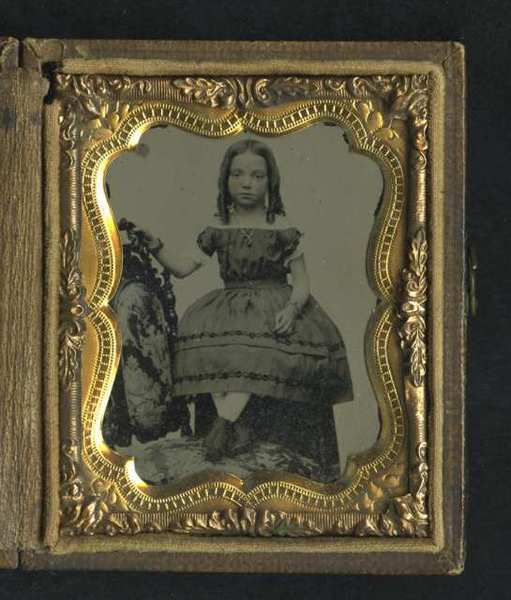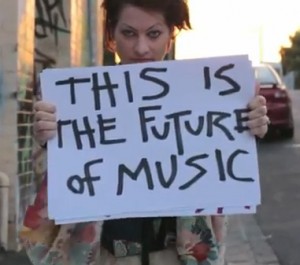
Our first annual summary of Dispatches from the Future of Museums—TrendsWatch 2012: Museums and the Pulse of the Future—is getting a lot of attention and commentary, which is great. But as soon as Phil Katz (my co-author) and I sent it to press, we started to experience “Rats! We should have included…” and “Look what just hit the news!” moments. Fortunately, on the Web, nothing is ever really finished. Here’s an update from Phil on the seven trends featured in the report. (He warns that this is “just the tip of the iceberg – a few prominent examples that caught my eye.”) We’re starting to work on this year’s summary already, and would love to hear from you! Use the comment section at the end of the blog tell us what stories in Dispatches you have found particularly important and useful to your work.
Harnessing the Crowd
- The Museum of the Confederacy in Richmond is using “the crowd” to help identify the people in Civil War era photographs. This was a relatively low-key effort until earlier this month when an AP story that included a picture of an especially winsome child went viral: “An Associated Press story on the effort to identify the subject in this and other photos was passed along repeatedly in social media circles throughout the day via Tweets, Facebook ‘likes,’ blog postings, news reports and more. On Yahoo News alone, the story was ‘liked’ nearly 2,000 times and had more than 1,700 comments.”
NPO No Mo’
- In April, Urban Institute hosted a panel on the question Are there too many nonprofits: “The vast and varied assembly of 1.8 million nonprofit organizations—about 1 nonprofit for every 175 Americans—faces a triple threat. From one direction comes reduced funding from government at all levels and diminished foundation grant making. From another comes harsh competition for corporate and individual donors. And from another comes an ever increasing demand for safety net and other services.”
- There are legitimate fears about the return of the “Pease” provision in 2013, which would limit the value of itemized deductions (including donations to charities like museums) for most individual filers with adjusted gross incomes of more than $175,000.
- We’ve tracked down one museums that has opted to take the L3C path: The Sackrider Museum of Handbags, a virtual museum (so far) in Chicago. The founder, Jill Brady, writes that L3C’s are “designed to be a hybrid between a charity and a for-profit entity for social entrepreneurs. Since we are capable of drawing from different sources of funding, we can draw capital from both charitable foundations and private investors.”
Takin’ It to the Streets
- We had to leave out one of one of our favorite examples of a pop-up museum because it fell outside our time frame for TrendsWatch 2012. The San Francisco’s GLBT Historical Society, opened a low-key, no-tech pop-up exhibit in the Castro District in 2008-09 while searching for a permanent home. It received such a positive response from visitors and donors—plus local businesses and community leaders—that the museum was able to secure a permanent location in the same neighborhood, which opened in 2010. (This particular museum has lessons for community development and the future of inclusive public history.)
Alt Funding:
- Amanda F*!@ing Palmer! The punk cabaret musician/performance artist just raised more than $1 million on Kickstarter to produce and market an independent album with accompanying art book. She started with a small but very loyal fan base, which she argues was vital to the success of the campaign. She also modestly claims this is the future of music; others say it’s the future of culture writ large.

- This summer, the UK is launching a large-scale experiment in using ATM’s for charitable donations. “Donations will be offered as a separate menu item on the ATM screen, or as a post-transaction option, so that making a donation will not interfere with the actions of people who just want to withdraw cash.” Nick Hurd, the UK’s minister for civil society, argues that “By making it possible to add donations at cash points we can make an even greater difference to other people’s lives.” Here at CFM, we think ATM donations could be the next big tool for alt funding.
- Giving through mobile technology has hit some roadblocks, however. Note that many museums say they are eager to collect donations via cellphone: According to a 2011 survey by AAM, 13 percent of all museums were planning to introduce or expand mobile giving opportunities last year (and we have an update to that survey coming out soon). But another recent survey by LearningTimes and Pocket-Proof shows that museums are seriously lagging in the introduction of any mobile platforms.
Creative Aging
- My favorite recent example of museums addressing issues of cognitive impairment is the SPARK! Program. This is a coalition of smallish museums around Milwaukee that are “extending their cultural and historical collections to create meaningful experiences for older adults with Alzheimer’s disease and their caregivers. The SPARK! project connects the museums with local partners in healthy aging to bring the model to the Midwest. The Alzheimer’s Association is assisting with training and support.” This project was featured in a session at the AAM Annual Meeting in Minneapolis St. Paul.
More Than Real
- Just this month, an ad agency in Amsterdam “hijacked” the Rijksmuseum to create a virtual exhibition entitled “Paint Job.” Some of the most famous paintings on the museum became backdrops for virtual graffiti when viewed through the AR app on a smartphone. It’s not clear how involved the museum was in planning this – but even if it was primarily a publicity stunt for the agency, it also allowed the art museum to demonstrate an unexpected level of hip-ness.
- And here are some up-and-coming technologies:
- Near Field Communication, which will not require anything as clunky as a QR or bar code to trigger gallery interactions;
- holograms in gallery spaces (following on the heels of the virtual Tupac at Coachella and the wildly popular—but not flesh-and-blood—Japanese pop performer Hatsune Miku).
New Educational Era
- We already know that homeschooling is booming. (According to the Dept. of Education, by 2007 an estimated 2.9 percent of all school-age children were being homeschooled.) In March, the New York Times reported that, “As the number of home-schooling families grows, museum programs for them are springing up all over the country.”
We are already sifting through the recent issues of Dispatches, tagging trends we might feature in TrendsWatch 2013. Use the comments section, below, to tell us what news items you have found particularly useful and relevant, and what trends you think are emerging as the Big New Thing.









There are two other Kickstarters worth noting that happened in the last month or two, both for board games. Both started with $20,000 goals and raised close to $1 million (or 4000% of their original goal). It's fascinating to track the updates on their kickstarter pages, to see what caused the overwhelming funding and how they reacted to it. Obviously they're doing something right.
Ogre: http://www.kickstarter.com/projects/847271320/ogre-designers-edition?ref=users
Zombicide: http://www.kickstarter.com/projects/coolminiornot/zombicide?ref=users
Thanks for the excellent review of trends. Do you have any trend analysis on what museums have spent on new exhibits over the last five years?
I think this is the GLBT History Museum link for "future of inclusive public history": http://clgbthistory.org/2012/01/12/aha-2012-“the-politics-of-respectability-reconsidered-using-the-framework-of-respectability-to-examine-southern-lesbian-history”/
I enjoyed looking at the many wall paintings that you have done. Not being very handy with a paintbrush, even though I know what I like in the way of art, I took the easier option to order this canvas print from the site wahooart.com .
It’s an unusual work called Forest music 1, by Remedios Varo Uranga, a Spanish-Mexican woman artist.